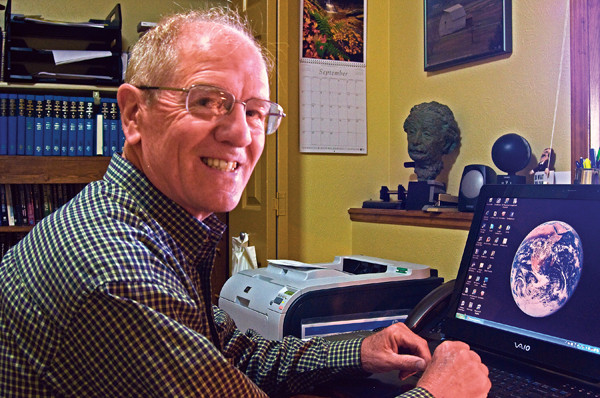
by George A. Seielstad Friday, December 28, 2012

George Seielstad
Humans’ ability to modify the Earth system now exceeds nature’s. So, whether by design or default, we are presently determining the future of the planet. To envision the intertwined futures of Earth and humankind, let’s consider where the history of the 20th century has brought us.
In the last century, the dominant element in terms of impacts on the economy, society, geopolitics and the environment was the insatiable exploitation of oil for energy. In terms of energy equivalence, a single barrel of oil can perform the work of a manual laborer working 40-hour weeks for seven years, so it is no mystery how humanity amassed sufficient power to change Earth dramatically.
New technologies accompanied oil’s development, putting the energy in a barrel of oil to work on a massive scale. Humans now move about 68 billion metric tons of rock and soil per year, compared with about 19 billion metric tons moved by water’s natural erosion. Technologies vastly more powerful than humans had to be harnessed in new industrial practices: hence the emergence of the mass production capabilities of assembly lines. Mass production was useless, however, without mass consumption. The century’s ever-growing population consumed more, but advertising drove demand far faster than did population. Finally, the past century ushered in globalization, which availed consumers anywhere of products that previously had only been available locally.
Accompanying the benefits provided during the 20th century was degradation of the global environment. The chemistry of the atmosphere and oceans was altered at an unprecedented pace. Ice fields receded. Sea levels rose. Species were extirpated a thousand times faster than the background rate. Forests shrank, and deserts expanded. By the end of the century, it was obvious the planetary experiment we had launched had to change.
But the century taught us another lesson: Humans are extraordinarily creative. Our capacity to innovate is one resource that is not only renewable, but also infinitely expandable. On top of that, we began to realize our good fortune in having the historic opportunity to change the course civilization has followed since the beginning of the industrial revolution. Few generations inherit the circumstances to do something as truly meaningful.
And so, here we are. But where must we head? Nature gives us the answer: toward sustainability. Before humans appeared on Earth, the great cycles of energy, water, matter, and nutrients that interconnect components of the Earth system maintained a balance that worked for billions of years. It is dangerously foolish to assume that Homo sapiens exist in some parallel space where the laws of nature do not apply.
Let us examine what must change in the 21st century:
Dematerialization: If everybody in the world lived as we do in the United States, humankind would need five planets. Now is the time for technological innovations to create much greater resource efficiency. The same effort that during the past was put into increasing the productivity of labor must now be put into increasing the productivity of all resources: land, water, energy and materials. No longer can we generate 29 tons of waste for every one ton of automobile manufacturing. Nor can we simply dispose of that one ton rather than recycle it. Once an ore or mineral is extracted and processed into a useful material, it must remain in the human cycle to minimize the need to extract more.
Decarbonization: Among the fossil fuels supplying most of the world’s energy, natural gas, petroleum, and coal, in that order, yield the most energy and the least carbon dioxide per unit mass when burned. Shifting up that fuel chain is a positive step, but is also only a mild palliative. The real need is to altogether eliminate carbon-based fuels, but that’s not feasible until we change the demand for transportation fuels.
Population Stabilization: No matter how efficiently and wisely people use resources, everybody needs basics — water, food, shelter, energy, healthcare and education. The more people there are, the more resources must be consumed; but limits of a finite planet prevent indefinite resource utilization. That explains the inclusion of education in the list of basic needs. In country after country, where females received at least a secondary education, the birth rate declined sharply. Providing education is a human service, but extending it to people everywhere will require innovative information technologies.
Less-Consumptive Mindsets: Developing new technologies is the easy part. But they alone will not save us, nor the rest of the biosphere. Suppose the use of resources does indeed become more efficient and the production of goods becomes less wasteful. Presumably, then, prices would fall. If people use the money saved to buy more goods, the production of which requires more energy, little will have been gained.
Underlying all the changes that must occur is one involving our mindsets. The world cannot afford mass consumption as society’s unflagging pursuit. If quality of life is defined only in terms of quantity of goods possessed, the future will deliver more misery than our children deserve.
© 2008-2021. All rights reserved. Any copying, redistribution or retransmission of any of the contents of this service without the expressed written permission of the American Geosciences Institute is expressly prohibited. Click here for all copyright requests.